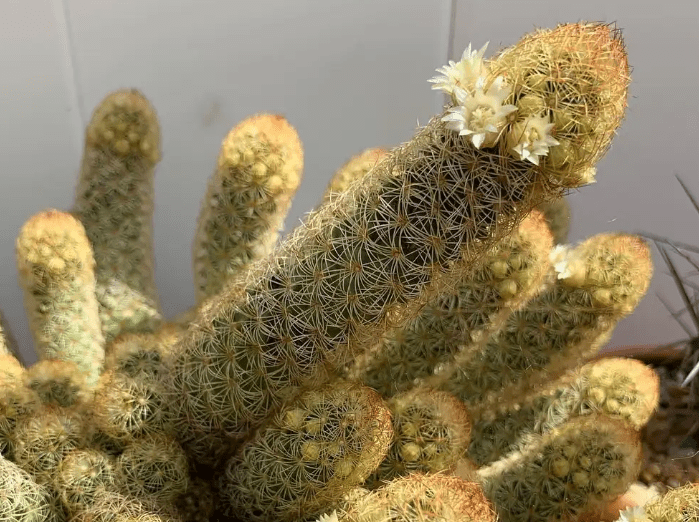
With dark green stems and bronze-orange spines, the Mammillaria elongata, also known as the Ladyfinger Cactus, is a type of cactus that is native to central Mexico. The clusters of offsets produced by this drought-tolerant species can be easily propagated to grow new plants.
It grows into dense clumps of cylindrical stems with spines that are brown-yellow in colour. The common name of the winter-dormant cactus comes from its lovely finger-like stems, which are long and slender in shape. Additionally, it blooms all through the spring with pink to yellow flowers.
Care Guide
Water
The drought-tolerant ladyfinger cactus doesn’t need to be watered frequently. When the soil is entirely dry, water it well. To prevent water buildup when watering a pot, water carefully, wait for water to trickle out the bottom, and then pour the extra water from the tray.
Its three main growing seasons are spring, summer and autumn. To keep the soil just a little bit moist, water once or twice every week. Water the soil only enough to prevent it from drying out too much over the winter, usually once a week. Additionally, use distilled or rainwater instead of tap water.
Calcium, magnesium, and other mineral salts are abundant in tap water. Compaction of the soil is often brought on by prolonged use. When watering, avoid sprinkling water on the stem to avoid rotting.
Fertilizer
During the ladyfinger cactus’ growing seasons (spring, summer and fall), fertilize it once a month with liquid fertilizer. Wintertime doesn’t call for fertilizer. When repotting in the spring or autumn, a tiny amount of slow-release fertilizer can be thoroughly incorporated into the soil.

Sunlight
As a heliophilic plant, the ladyfinger cactus need enough sunlight to thrive and blossom. It may be positioned on a balcony or in an open area of a garden. But in the sweltering summer, when it has to be covered or slightly refrigerated to prevent damage from high temperatures, extended exposure to direct sunlight should be avoided.
Pruning
Pruning the ladyfinger cactus is not necessary very often. Remove dead branches and blooms to allow the plant to focus its resources on nutrient-rich growth.
Temperature
The ladyfinger cactus is found in tropical, subtropical, and semi-desert areas that experience little precipitation, strong sunlight, and scorching temperatures. 20 to 35 °C is the ideal temperature for growth. Temperatures below 10 °C or above 35 °C cause development to stall and dormancy to start. The surroundings should be well-ventilated and the air humidity shouldn’t be too high. Avoid accumulating water and high humidity.
Soil
The ladyfinger cactus thrives in soil that is fertile, rich in gravel, permeable to water, and has a pH level of 6-7. 60% vermiculite + 20% coco coir or peat moss + 20% sandy soil is a common culture soil composition. You might also add a tiny bit of organic potting soil. To increase the soil’s air permeability, lightweight culture media like vermiculite can be applied.
Table





